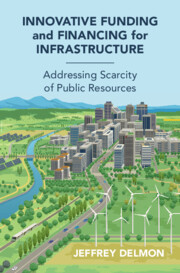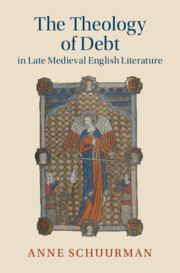129 results
3 - The Economy
-
-
- Book:
- The Conservative Effect, 2010–2024
- Print publication:
- 27 June 2024, pp 71-101
-
- Chapter
- Export citation
11 - Commerce and Contracts
-
-
- Book:
- The Cambridge Comparative History of Ancient Law
- Published online:
- 09 May 2024
- Print publication:
- 30 May 2024, pp 565-597
-
- Chapter
- Export citation
Chapter 23 - Wagner’s Finances
- from IV - Life, Language, and the Ancient World
-
-
- Book:
- Wagner in Context
- Published online:
- 14 March 2024
- Print publication:
- 14 March 2024, pp 229-238
-
- Chapter
- Export citation
4 - The Merchant House
- from Part II - The Lineaments of Racial Capitalism
-
- Book:
- Lucky Valley
- Published online:
- 11 January 2024
- Print publication:
- 22 February 2024, pp 156-201
-
- Chapter
- Export citation
4 - Public Finances and Decarbonisation
-
- Book:
- The Macroeconomics of Decarbonisation
- Published online:
- 01 February 2024
- Print publication:
- 08 February 2024, pp 109-159
-
- Chapter
- Export citation

Innovative Funding and Financing for Infrastructure
- Addressing Scarcity of Public Resources
-
- Published online:
- 01 February 2024
- Print publication:
- 08 February 2024
Introduction
-
- Book:
- The Theology of Debt in Late Medieval English Literature
- Published online:
- 04 January 2024
- Print publication:
- 18 January 2024, pp 1-24
-
- Chapter
- Export citation
Chapter 17 - Social Aspects of Consultation-Liaison Psychiatry
-
-
- Book:
- Seminars in Consultation-Liaison Psychiatry
- Published online:
- 04 January 2024
- Print publication:
- 18 January 2024, pp 288-300
-
- Chapter
- Export citation
An introductory framework for ‘Habilito: Debt for Life’
-
- Journal:
- Finance and Society / Volume 2 / Issue 1 / 2016
- Published online by Cambridge University Press:
- 05 January 2024, pp. 86-89
-
- Article
-
- You have access
- Open access
- Export citation
Artists, debt, and global activism
-
- Journal:
- Finance and Society / Volume 2 / Issue 1 / 2016
- Published online by Cambridge University Press:
- 05 January 2024, pp. 2-24
-
- Article
-
- You have access
- Open access
- Export citation

The Theology of Debt in Late Medieval English Literature
-
- Published online:
- 04 January 2024
- Print publication:
- 18 January 2024
Social Determinants of Health: As Seen in a Courtroom
-
- Journal:
- Journal of Law, Medicine & Ethics / Volume 51 / Issue 4 / Winter 2023
- Published online by Cambridge University Press:
- 13 March 2024, pp. 984-987
- Print publication:
- Winter 2023
-
- Article
- Export citation
2 - Demystifying Consumer-Facing Fintech
- from Part I - Automated Banks
-
-
- Book:
- <i>Money, Power, and AI</i>
- Published online:
- 16 November 2023
- Print publication:
- 30 November 2023, pp 29-50
-
- Chapter
-
- You have access
- Open access
- HTML
- Export citation
Who owes? Class struggle, inequality and the political economy of leverage in the twenty-first century
-
- Journal:
- Finance and Society / Volume 8 / Issue 1 / 2022
- Published online by Cambridge University Press:
- 09 November 2023, pp. 1-21
-
- Article
-
- You have access
- Open access
- Export citation
Hard cash, easy credit, fictitious capital: Critical reflections on money as a fetishised social relation
-
- Journal:
- Finance and Society / Volume 1 / Issue 1 / 2015
- Published online by Cambridge University Press:
- 09 November 2023, pp. 20-37
-
- Article
-
- You have access
- Open access
- Export citation
The money array; or, show me the debtor
-
- Journal:
- Finance and Society / Volume 9 / Issue 2 / 2023
- Published online by Cambridge University Press:
- 09 November 2023, pp. 1-20
-
- Article
-
- You have access
- Open access
- Export citation
Making ‘Making money’: A discussion with Ole Bjerg
-
- Journal:
- Finance and Society / Volume 1 / Issue 1 / 2015
- Published online by Cambridge University Press:
- 09 November 2023, pp. 75-80
-
- Article
-
- You have access
- Open access
- Export citation
Is there life after debt? Revolution in the age of financial capitalism
-
- Journal:
- Finance and Society / Volume 1 / Issue 1 / 2015
- Published online by Cambridge University Press:
- 09 November 2023, pp. 81-89
-
- Article
-
- You have access
- Open access
- Export citation
Transforming usury into finance: Financialization and the ethics of debt
-
- Journal:
- Finance and Society / Volume 4 / Issue 1 / 2018
- Published online by Cambridge University Press:
- 09 November 2023, pp. 41-59
-
- Article
-
- You have access
- Open access
- Export citation
5 - Crisis and Conversion
-
- Book:
- The Mizo Discovery of the British Raj
- Published online:
- 12 October 2023
- Print publication:
- 02 November 2023, pp 172-205
-
- Chapter
- Export citation



